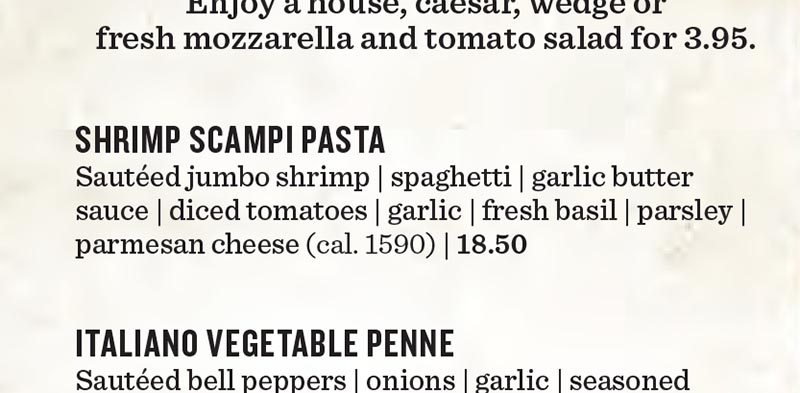Peter’s Memo: Calories on menus...finally


At The Cheesecake Factory, the Louisiana Chicken Pasta has twice the calories of the Four Cheese Pasta (2,330 vs. 1,190). At California Pizza Kitchen, even the Quinoa and Arugula Salad has 1,070 calories.
But before May 7, not all customers would have known that.
Why May 7? By that date, chain restaurant menus and menu boards across the country had to disclose the calories in every menu item.
Getting there wasn’t easy. Almost 30 years ago, Congress was debating the Nutrition Labeling and Education Act, the law that requires Nutrition Facts on food labels. One sticking point: What to do about restaurants?
Some legislators wanted to require them to disclose calories and other nutrients. But the restaurant industry vehemently objected.
Lawmakers and outside supporters (like CSPI, publisher of Nutrition Action) feared that the whole bill might go down the drain, so they decided to deal with restaurants later.
It was a good trade-off. Nutrition Facts labels have helped millions of consumers become smarter shoppers.
But as time went by, restaurant meals—and waistlines—steadily grew. Cheeseburgers became double bacon cheeseburgers. Soft drinks morphed into quart-sized Big Gulps. So, in 2003, we started to push for a law requiring restaurants to post calories on menus.
At first, we focused on cities and states. Luckily, a public health champion—Michael Bloomberg—was the mayor of a city with an assertive and talent-rich health department. We worked with the department of health to make New York the first city to require calories on menus, in 2006.
We also helped local groups in Philadelphia, Seattle, California, and some 20 other cities and states win menu labeling policies.
Different rules in different jurisdictions was promising to be a huge headache for chains.
Eventually, the restaurant industry came to the table. In 2010, it agreed to support a national bill, which passed that same year. But movie theaters, pizza chains, and the alcohol industry wanted exemptions.
So did convenience stores and supermarkets (which offer bakery items, salad bars, sandwiches, and other prepared foods).

For eight years, we successfully fought them off. Kudos to Margo Wootan, CSPI’s vice president for nutrition, for getting the original law passed and for fending off attempts to weaken it.
Calories on menus matter. They tell diners what’s in their food and encourage chains to slim down their offerings.
And now, when you’re at a chain with at least 20 locations, you can also ask for information about sodium, saturated fat, and other nutrients (numbers have to be made available, though not necessarily on the menu).
Up next: using the numbers on menus to urge restaurants to lower calories, offer half portions, and give their customers more healthy options. Stay tuned.
Peter G. Lurie, MD, MPH, President, Center for Science in the Public Interest

